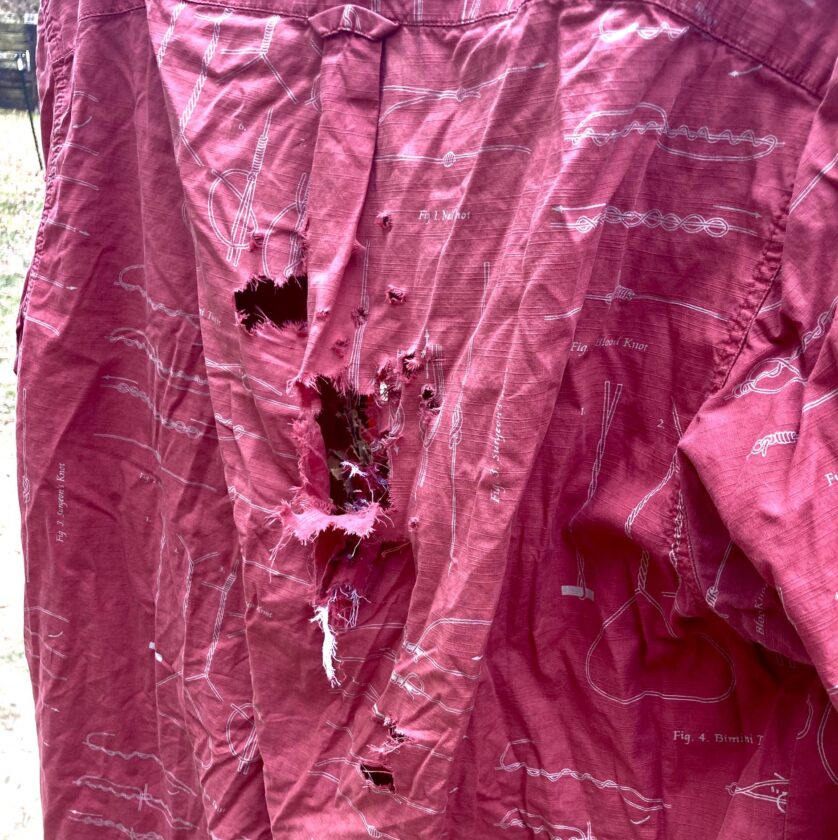I have thought a lot about the visual cues we create for ourselves in training. We shoot at targets with clearly defined “A” Zones, bullseyes, down-0 areas, and other clearly marked hits. Are we likely to have these visual cues in a life-or-death confrontation, though? Probably not, and thus the idea of shooting clothed targets.
Shooting Clothed Targets
The idea for this was borne out of several questions. It began when I was walking my dog one day. I saw a man wearing a shirt with a large, 8-inch circle in the high, center chest. I thought, “man, that presents a really good target.” This led to several questions. First, was my clothing inadvertently providing a good aiming point for bad guys who may be shooting at me? Second, does the A-zone of the IDPA targets I like to shoot approximate a real center-mass hit? And finally, having only once ever shot a target with a shirt on it, was I doing myself a disservice by only shooting at naked cardboard?
I went to thrift store before my next range visit, and attempted to answer these questions.
Does Clothing Provide a Good Aiming Point?
Do the graphics on clothing provide a good aiming point? To be honest, I didn’t answer this one definitively. Since most of the shirts I wear have a logo on the left breast, the answer is “maybe.” Criminals aren’t know for phenomenal accuracy but a large graphic, high-center chest might not be a great idea. The eye may be drawn to it, even unconsciously, as an aiming point. This probably isn’t a huge concern, but maybe something you should consider. The backs of most of the t-shirts I wear do present a pretty good aiming point. Many of them have a large, circular graphic, high center mass.
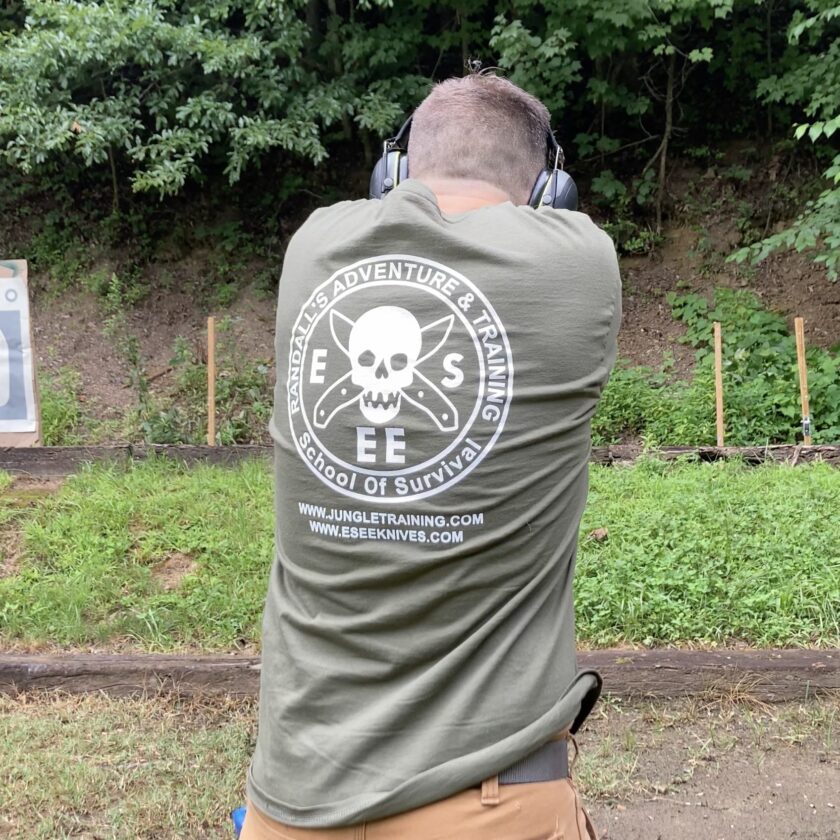
Anecdotally, I found that I wasn’t distracted by or visually drawn to graphics on shirts. Then again, I only shot at the fronts of shirts with graphics over the left breast. As a very experienced/trained shooter, I don’t believe I was influenced by graphics or logos and still focused my shots center mass. How this applies to an relatively unskilled shooter or the criminal community at large, I’m not prepared to answer. Let’s move on to the next question.
Is the A-Zone Actually Center Mass?
The next thing I wanted to know is how high center mass on a t-shirt (and thus, a torso) correlates to an IDPA target’s down-0 zone (I’ll call it the A-zone from here on out). To be honest, I didn’t think the two would match up very well. So I dressed up the targets, and shot where I thought I should shoot in relation to the appropriate anatomy: high in the center of the chest.
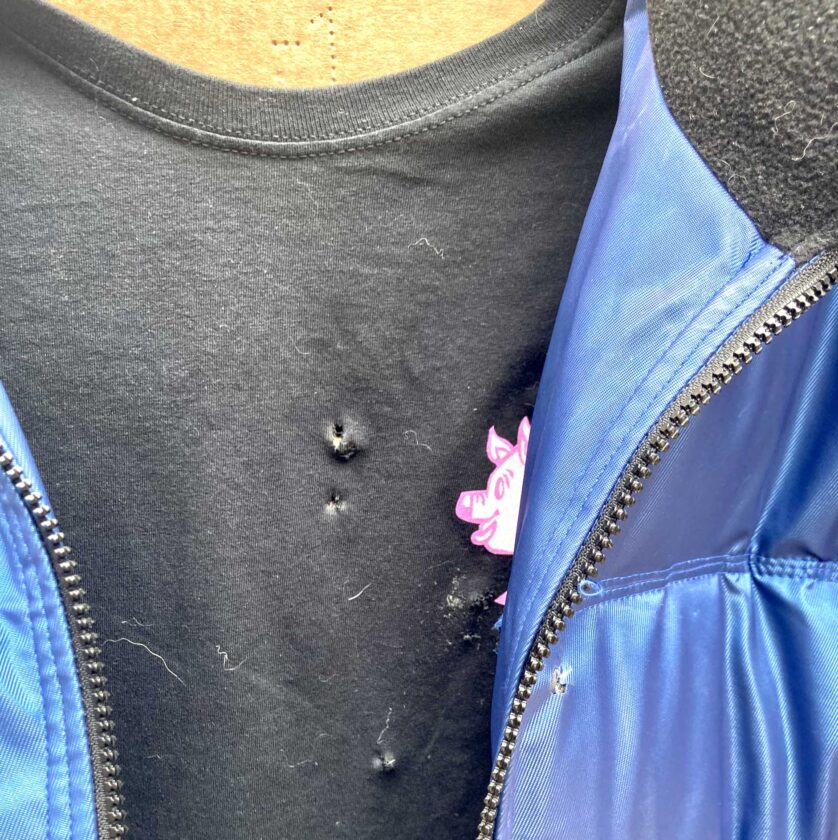
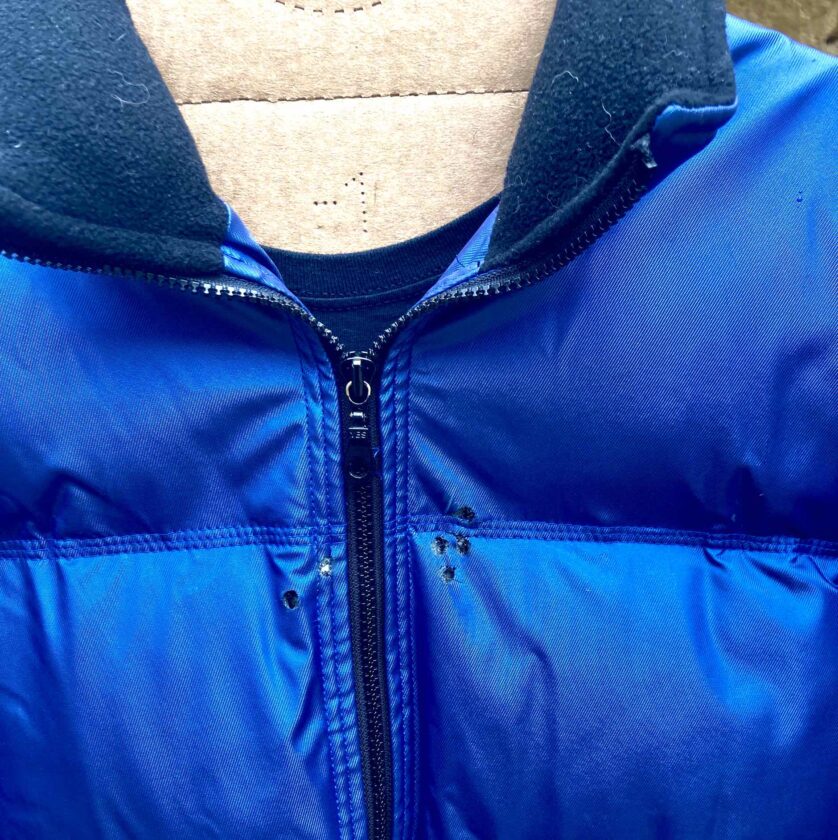
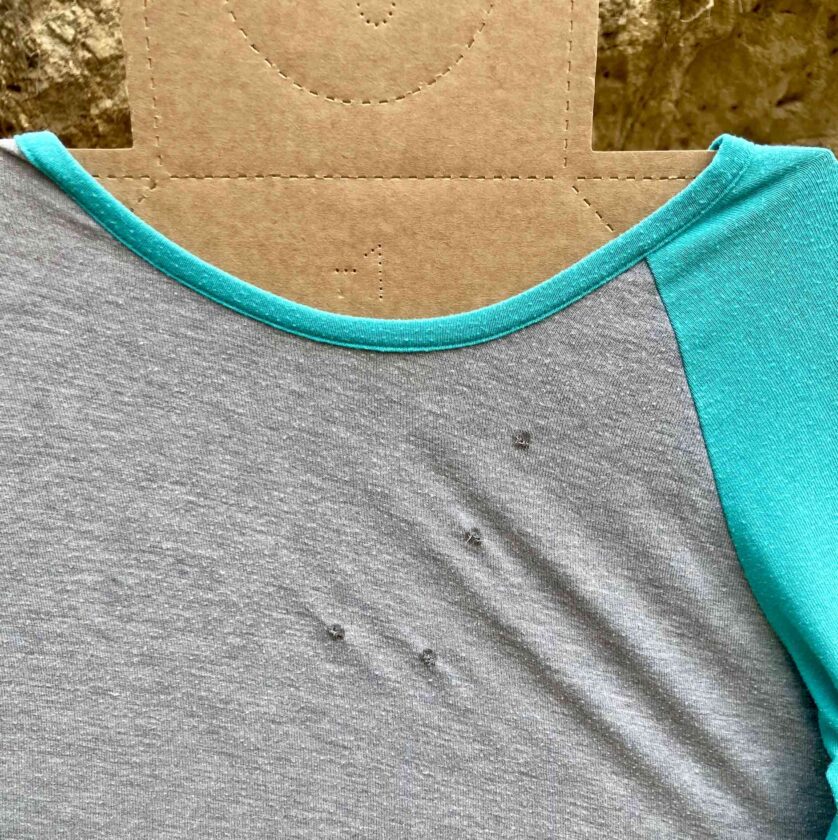
And boy, was I surprised. These shots were right where they needed to be in the A-zone. When placed in the center of the shirt, a few inches south of the neckline, these shots were solid A zone hits.
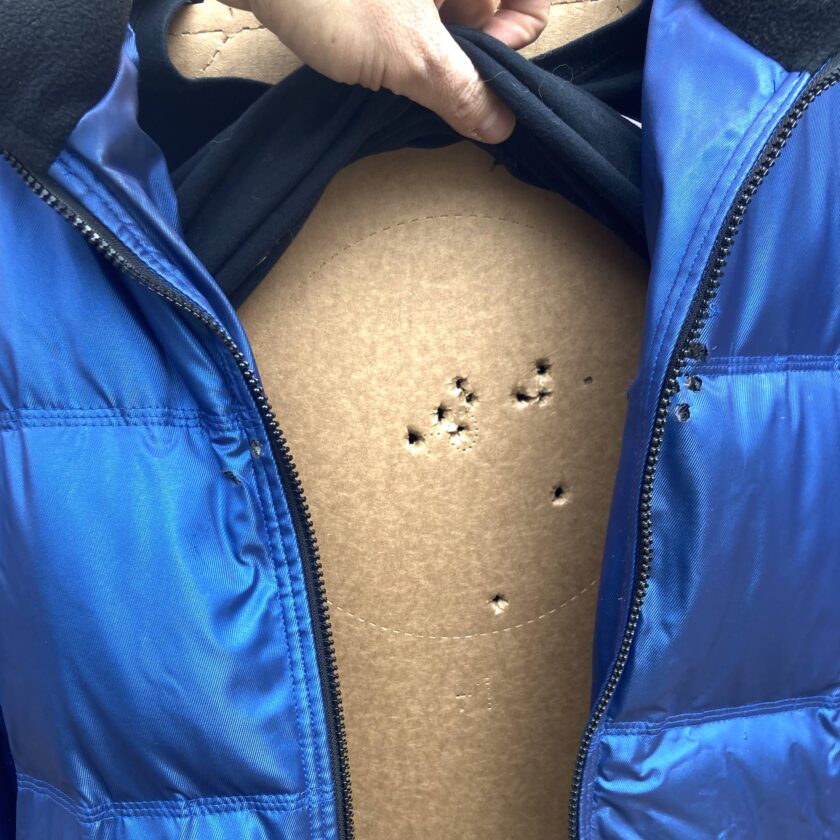
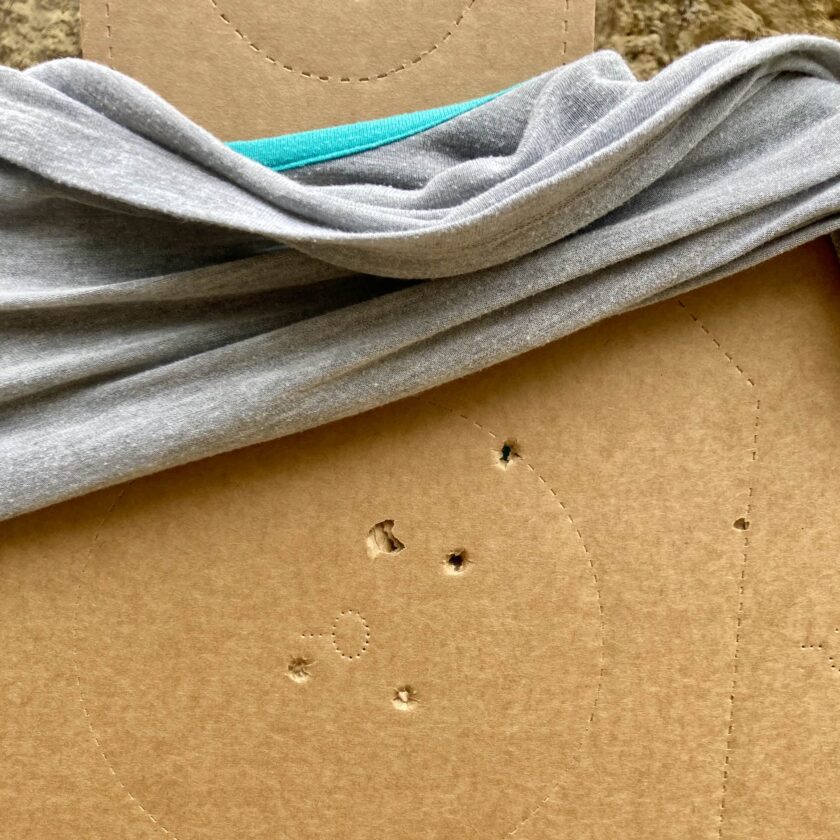
This leads me to believe that the IDPA and IPSC targets are pretty well-designed. The head may sit a little low, but the A-zone does closely approximate a devastating, center-mass hit. And this leads us to our third question:
Is Naked Cardboard The Best Target?
Almost all of us shoot at naked targets, all the time. Other than my little experiment here, I’ve only shot clothed targets one other time, in a local, IDPA-style match. The rest of my shooting (and probably yours) has been at targets. I do think there are a couple of problems with this.
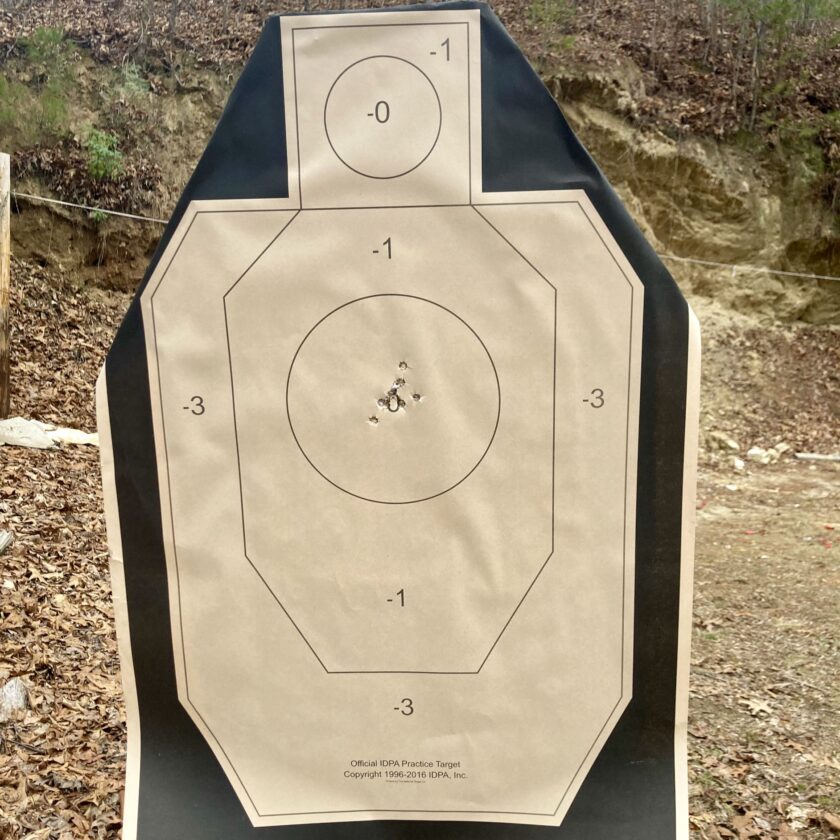
First, targets are targets – they have a clearly defined area where you’re supposed to hit, and one that you’re not supposed to hit. Some targets even show vital organs, which you will not see on a violent aggressor. There is very little ambiguity to a target like this, and for good reason. Targets like this are outstanding for quantifying accuracy. However, it is possible that only shooting at targets creates a visual cue of “we shoot at targets, and we don’t shoot at things with clothes on.” Could this cause hesitation in a gunfight? Could it cause inaccuracy in a gunfight?
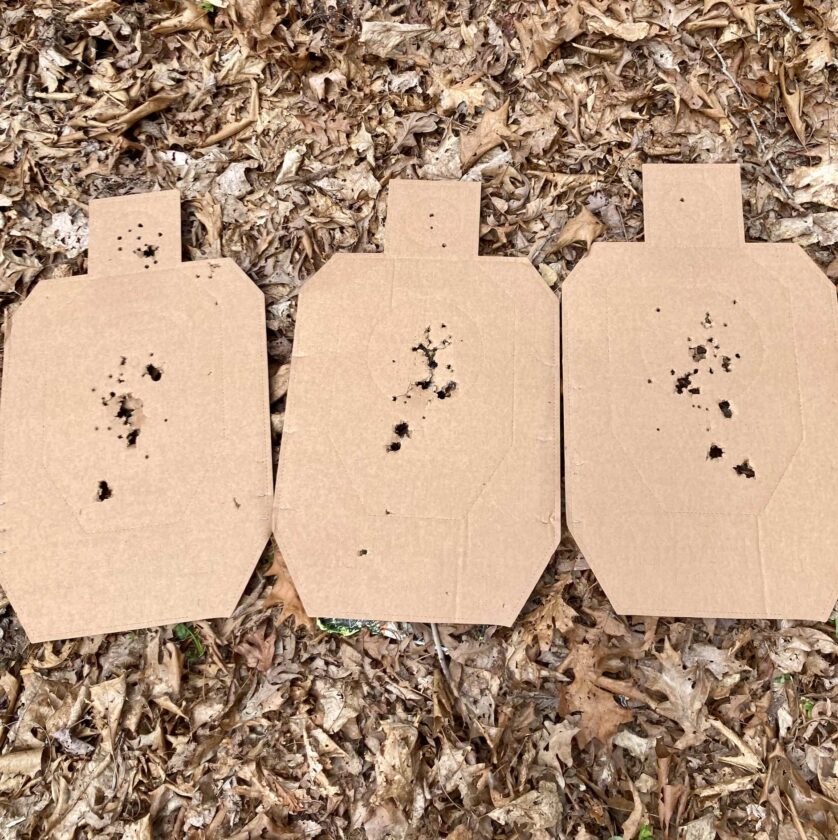
Clearly this isn’t insurmountable; hundreds of armed Citizens defend themselves every year. Very few of them have ever shot at a target with a shirt on. Since training is about gaining every possible advantage, though, this may be worth doing occasionally. It may reduce some hesitation; even if only by a fraction of a second it may be worth it. It may also help you learn where to aim on a shirt that lacks clear “shoot here, don’t shoot there” zones.
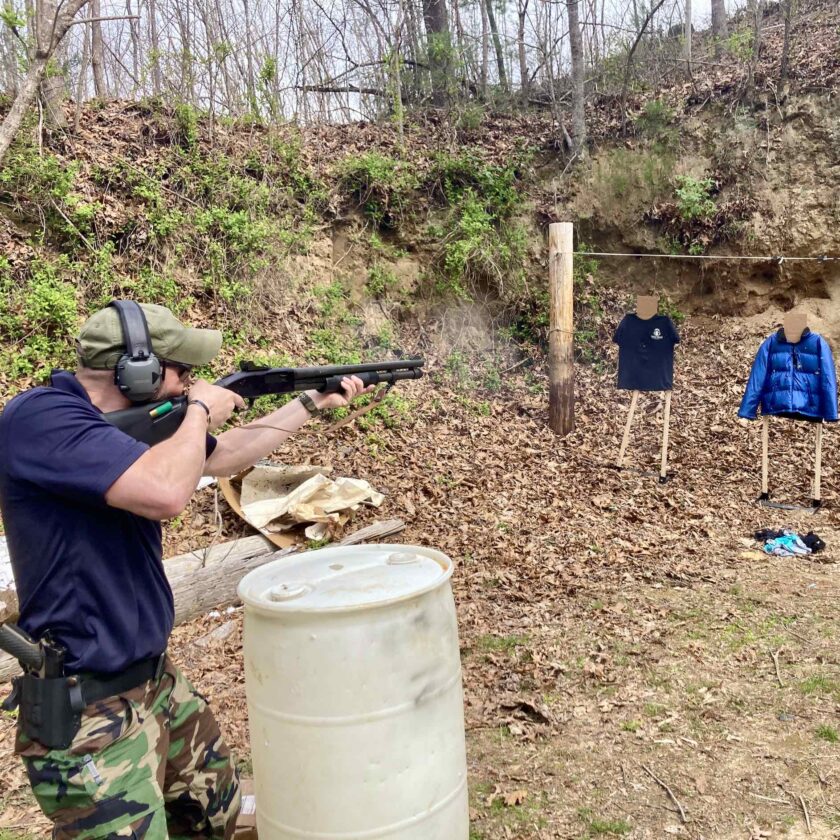
Finally, one thing that shooting clothed targets definitely does is create novelty. In a couple days I am attending the Cognitive Conclave taught by Gelhaus, Hearne, and Weems and am working to add as much novelty as possible into my range sessions. Shooting clothed targets is similar in many ways to using photorealistic targets, and maybe superior in some ways, at least for the novelty aspect.
Closing Thoughts
I actually learned something from this silly exercise. I did not find out if my clothing presents an attractive target to a bad guy – there are just too many variables at play. However, six dollars’ worth of thrift store clothing taught me about my aiming points on clothing. It also gave me a visually novel range session. Two of my buddies and I shot clothed targets with pistols, rifles, and shotguns.
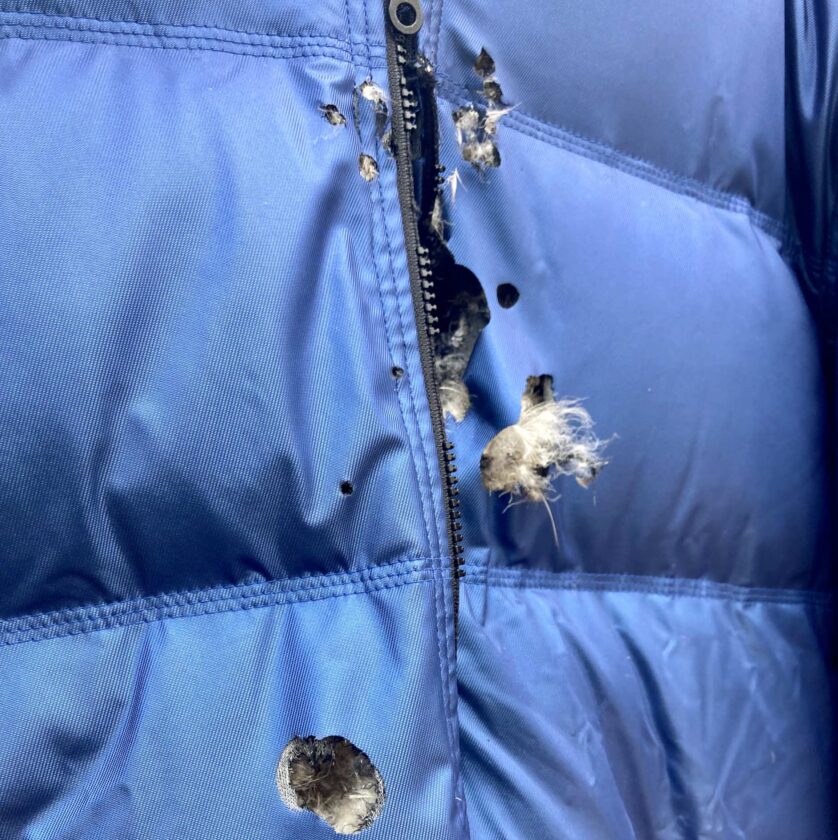
Most ranges probably don’t allow this, but if you can do it, even once, I encourage you to give it a try. This will build confidence in your aiming points while shooting clothed targets. It may teach you that your targets’ A zones or bullseyes don’t correlate well to real life.
